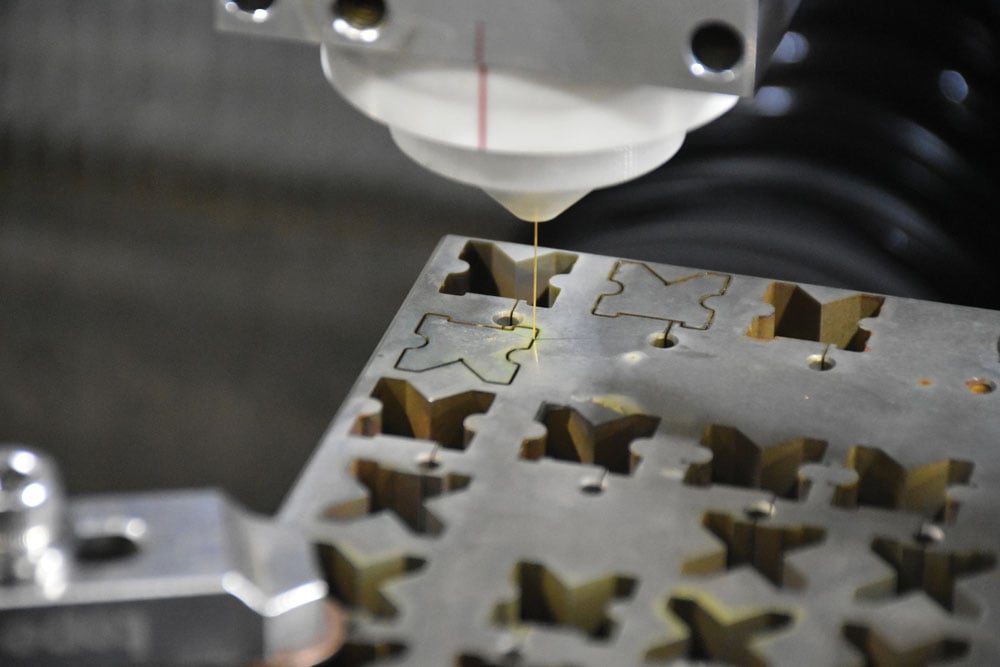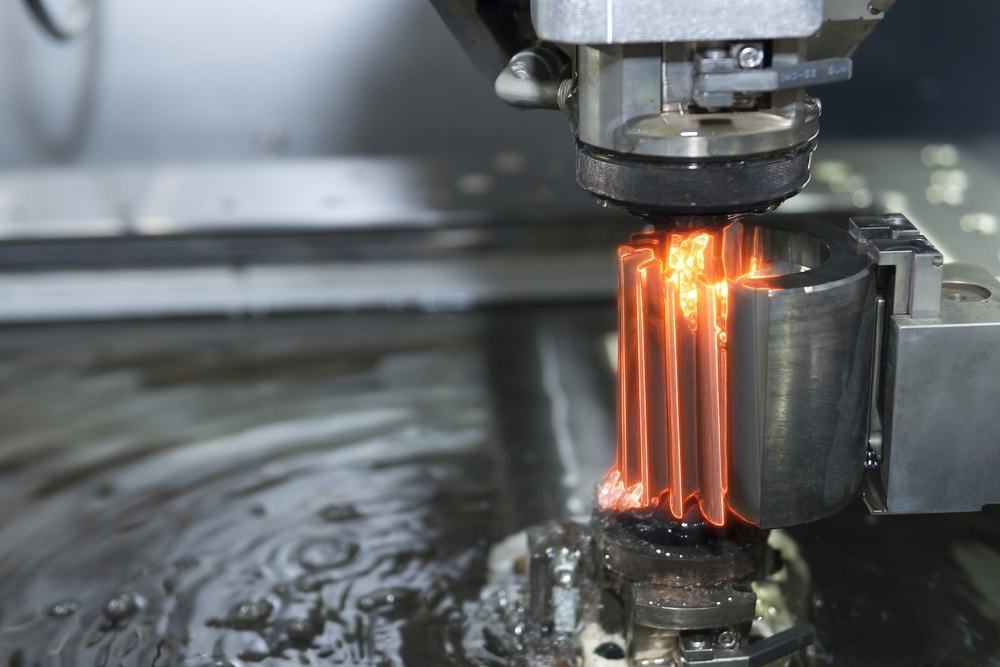Wire EDM
Electric discharge machining (EDM), also referred to as spark machining, spark eroding, burning, die sinking or wire erosion, is a manufacturing process whereby a desired shape is obtained using electrical discharges (sparks). Material is removed from the workpiece by a series of rapidly recurring current discharges between two electrodes, separated by a dielectric liquid and subject to an electric voltage. One of the electrodes is called the tool-electrode, or simply the ‘tool’ or ‘electrode’, while the other is called the workpiece-electrode, or ‘workpiece’.
For additional information about Wire EDM, please read the below information, or contact one of Advanced Precision Machining’s experts.


When the distance between the two electrodes is reduced, the intensity of the electric field in the volume between the electrodesWire EDM (Electric Discharge Machining) – Longmont Machine Shopbecomes greater than the strength of the dielectric (at least in some points), which breaks, allowing current to flow between the two electrodes. This phenomenon is the same as the breakdown of a capacitor (condenser) (see also breakdown voltage). As a result, material is removed from both the electrodes.
Once the current flow stops (or it is stopped – depending on the type of generator), new liquid dielectric is usually conveyed into the inter-electrode volume enabling the solid particles (debris) to be carried away and the insulating proprieties of the dielectric to be restored. Adding new liquid dielectric in the inter-electrode volume is commonly referred to as flushing. Also, after a current flow, a difference of potential between the two electrodes is restored to what it was before the breakdown, so that a new liquid dielectric breakdown can occur.
Applications
- Prototype production
- Coinage die making
- Small hole drilling
- Metal disintegration machining
